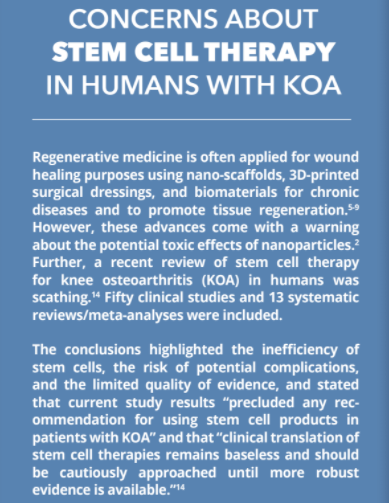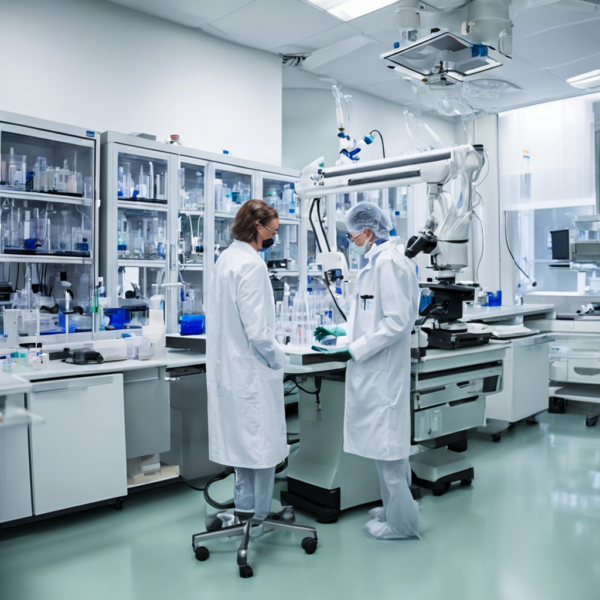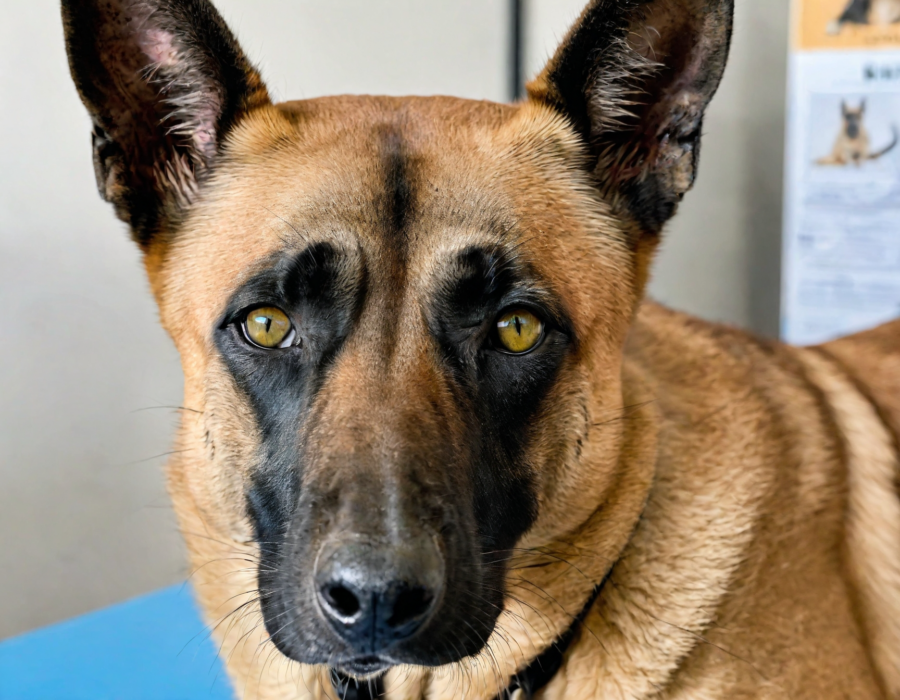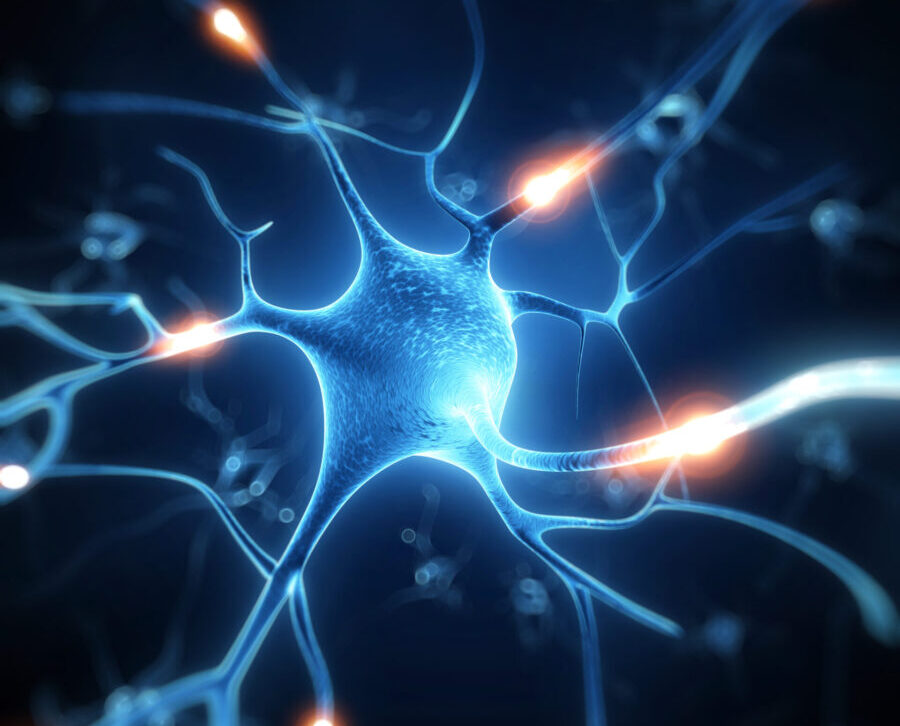How regenerative medicine and stem cell therapy are being increasingly utilized to enhance hematological knowledge in companion animals and treat related conditions in these species.
Regenerative medicine involves replenishing and utilizing the bodys undifferentiated stem cells, which then become specialized for replacing or repairing body tissues damaged by disease or injury. This article looks at how regenerative medicine in veterinary hematology is being used to enhance our knowledge of hematological issues in dogs, cats, and horses, and help treat a range of conditions in these species.
Birth and development of regenerative medicine
The benefits and clinical applications of medicinal therapies have been well-recognized for centuries, long before the term regenerative medicine came into common use.1 In fact, these medical developments and methods were pioneered by ancient civilizations in Mesopotamia, Egypt, China, India, and South America. The roots of this technology were anchored in the concept of epigenetic regeneration (modification of gene expression), as shown mostly in paintings depicting myths along with descriptions of the generation and regeneration of animals.
The principles of regenerative medicine evolved from the historical milestones and scientific breakthroughs that occurred over subsequent generations, with more research being done in the 18th and 19th centuries.1
Today, this scientific knowledge and the potential of regenerative medicine has rapidly expanded to restoring human health in an assertive, consistent manner.2-9 In 2023, the ability to grow red blood cells from the stem cells of healthy human donors in the laboratory initiated further in vitro research, with the first human trial being carried out in the UK.3
Regenerative medicine in veterinary hematology
Currently, this knowledge is being applied to laboratory research and companion animals, and is now involved at the forefront of health care for all species.3-13 In 2010, the North American Veterinary Regenerative Medicine Association (NAVRMA) was formed to encourage the development, training, and knowledge of veterinary regenerative medicine. This group remains fully active today, holding an annual conference and awarding training and travel grants for graduate students (navrma.org).
Lets review how this technology has been, and will continue to, apply to comparative and veterinary hematology:3,4,10,11,13-18
- Regenerative therapies that include?mesenchymal stem cells, platelet-rich plasma, and autologous serum products are increasingly utilized in veterinary medicine for treating horses, dogs, and cats.4,8,9,13,18
- Veterinary regenerative medicine is?an active area of research for developing new cell and tissue therapies for animals. These therapies act to repair, replace, restore, and regenerate damaged or diseased tissues,8,9,13-18 and potential use of regenerative medicine in veterinary hematology is also promising.
- A list of the number of commercially available bio-scaffolds in 2021 appears in the appendix to footnote nine: tissue sources = collagen (6); extracellular matrix (ECM) (29); hyaluronic acid (HA) (7)9
Current applications and research
- In one study involving dogs, several transcription factors were used to forcibly reprogram somatic cells and turn them into induced pluripotent stem cells.4 Even after multiple cell passages, these new cell lines derived from canine peripheral mononuclear cells enriched with specific media, and a small molecule inhibitory factor maintained the karyotype of normal cells.4
Dogs share many diseases and environmental exposures with humans, making them an ideal translational species for comparative investigations, but canine somatic cell reprogramming has been fraught with problems of low efficiencies and incomplete pluripotency.15 Other factors such as cost, safety, and feasibility are potential roadblocks to the widespread clinical use of this technology for treating canine diseases.
- In other research regarding regenerative medicine in veterinary hematology, earlier reprogramming into an embryonic stem cell-like state was done using mouse and human fibroblasts. Mice with induced humanized sickle cell anemia were subsequently shown to be rescued after transplantation with hematopoietic progenitors that provided gene-specific targeting.10 Application of this approach for treating affected mice needs to address issues with the use of retroviruses and oncogenes for the reprogramming, before it can be applied clinically to humans and companion animal species.
Canine induced pluripotent stem cells have typically used fibroblasts for translational research in regenerative medicine, developmental biology, drug screening, and disease modeling.17 Newer technology with improved reprogramming efficiency used urine-derived cells that were reprogrammed under feeder-free conditions with a Sendai virus vector.17
- In 2002, the veterinary company Vet Stem began development of its patented stem cell therapy using adipose-derived cells tissues in horses. Their first clinical treatment of a horse took place in 2004, and since then, more than 4,000 horses have been treated with their technology for bowed tendons, ligament injuries, and joint disease. In 2011, commercial treatment was extended to dogs and cats for osteoarthritis and soft tissue injuries. Over 14,000 animals have been treated with a very low reported adverse reaction rate (0.1-0.3%). Peer-reviewed, double-blinded, placebo-controlled studies have been published, as well as retrospective and case studies for degenerative disorders. Vet Stem holds licenses to over 70 patents and has worldwide veterinary rights for use of adipose-derived stem cells.

The many stated benefits of using adipose-derived regenerative cells rather than those from bone marrow or allogeneic and autologous tissues include ready availability; greater numbers of stem cells than bone marrow; differentiation into multiple lineages for repair of bone, cartilage, and heart; and a heterogeneous mixture of regenerative cells (vetstem.com).
- Similar equine mesenchymal stem cell studies were recently published in 2019 and 2020.13 Feline research for inflammatory bowel disease, asthma, kidney disease, and chronic gingivostomatitis was published by others in 2018, while canine research for osteoarthritis, osteochondritis, tendonitis, ligament rupture, fractures, and cartilage regeneration was reported in 2019.13 Also see celltherapytools.com.
Clearly, these reported successes in animals contrast with the expressed concerns about human stem cell therapy for treating osteoarthritis (see sidebar).13, 14
For additional information, see also ingeneron.com, ardenanimalhealth (formerly MediVet Biologics) and safarivet.com.
_____________________________________________________
1Santana MHA, Huber SC. History and evolution of regenerative medicine. Eds: Maria H. Santana, Eliana B. Souto, Ranjita Shegokar. In Nanotechnology and Regenerative Medicine, 2023, Ch. 2, 23-44. https://doi.org/10.1016/B978-0-323-90471-1.00011-6.https://s100.copyright.com/AppDispatchServlet?publisherName=ELS&contentID=B9780323904711000116&orderBeanReset=true
2Formoso I, Shegokar R, Zielinska A, et al. Applications of nanotechnology in chronic diseases and tissue regeneration. Eds: Maria H. Santana, Eliana B. Souto, Ranjita Shegokar. In Nanotechnology and Regenerative Medicine, 2023, Ch. 14, 507-527. http://doi.org/10.1016/B978-0-323-90471-1.00021-9.
3Lawrence L. Lab-grown RBCs start long journey of discovery. AABB News, 2023, May; 12-15. www. aabb.org.
4Kimura K, Tsukamoto M, Tanaka M, et al. Efficient reprogramming of canine peripheral blood mononuclear cells into induced pluripotent stem cells. Stem Cells Dev. 2021 Jan 15; 30(2),79-90. doi:10.1089/scd.2020.0084.
5Handa?M,?Soni M,?Beg?S,?Shukla R. Nanoscaffolds and role of 3D-printed surgical dressings for wound healing application. Eds: Maria H. Santana, Eliana B. Souto, Ranjita Shegokar, In Nanotechnology and Regenerative Medicine, 2023, Ch. 14, 371-395. doi.org/10.1016/B978-0-323-90471-1.00021-9.
6Dias-Ferreira J, Teixeira MC, Severino P, et al. Applications of biomaterials in wound healing management: from fundamental physiology to advanced technology. Eds: Maria H. Santana, Eliana B. Souto, Ranjita Shegokar. In Nanotechnology and Regenerative Medicine, 2023, Ch. 13, 349-369. http://doi.org/10.1016/B978-0-323-90471-1.00020-7.
7Soriano JL, Ríos M, López E, et al. Chapter 16 – Tissue engineering in wound healing. Eds: Maria H. Santana, Eliana B. Souto, Ranjita Shegokar. In Nanotechnology and Regenerative Medicine, 2023, Ch. 16, 411-453. http://doi.org/10.1016/B978-0-323-90471-1.00017-7.
8Londono R, Badylak SF. Biologic scaffolds for regenerative medicine: mechanisms of in vivo remodeling. Annals of Biomedical Engineering, 2015, 43(3),577-592. http://doi.org/10.1007/s10439-014-1103-8.
9Dewey M, Badylak SF. A review of bioscaffolds for functional tissue repair. JAHVMA, 2021, 65 Winter, 37-47.
10Hanna J,?Wernig M,?Markoulaki S,?et al. Treatment of sickle cell anemia mouse model with iPS cells generated from autologous skin. Science, 2007, 318(5858), 1920-1923. doi: 0.1126/science.1152092.
11Garner S. Texas veterinarian saving anemic dogs through the use of stem cells. Stem cell therapy is a useful weapon in the fight against immune-mediated hemolytic anemia (IMHA). Vet Pract News, 2021, July 9, Digital Edition.
12Manfiolli AO, Amaral R, Caliari-Oliveira C. Stem cells, organoids, and cellular therapy. Eds: Maria H. Santana, Eliana B. Souto, Ranjita Shegokar. In Nanotechnology and Regenerative Medicine, 2023, Ch. 10, 233-263. http://doi.org/10.1016/B978-0-323-90471-1.00003-7.
13Baouche M, Ochota M, Locatelli Y, Mermillod P, et al. Mesenchymal stem cells: generalities and clinical significance in feline and canine medicine. Animals, 2023, 13, 1903-1917. http//:doi.org/10.3390/ani13121903.
14Shang Z, Wanyan P, Zhang B, Wang M, et al. Review. A systematic review, umbrella review, and quality assessment on clinical translation of stem cell therapy for knee osteoarthritis: Are we there yet? Stem Cell Research & Therapy, 2023, 14, 91-107. http://doi.org/10.1186/s13287-023-03332-5.
15Kuzma-Hunt AG, Shah V, DiMarco S, et al. Opening the black box underlying barriers to the use of canine induced pluripotent stem cells: a narrative review. Stem Cells Dev, 2023, 32(11-12), 2 Jun, 271-291. http://doi.org/10.1089/scd.2022.0300.
16Menzorov AG. Pluripotent stem cells of order Carnivora: technical perspective. Int J Mol Sci. 2023, Feb 15, 24(4), 3905. doi: 10.3390/ijms24043905.
17Tsukamoto M, Kimura K, Yoshida T, Tanaka M, et al. Generation of canine induced pluripotent stem cells under feeder-free conditions using Sendai virus vector encoding six canine reprogramming factors. Stem Cell Reports 2024, 19, 141-157. http:.//doi.org/10.1016/j.stemcr.2023.11.010.
18Canine induced pluripotent stem cells open new frontiers in veterinary medicine. IVC Journal, 2024, Jan 8. https:// ivcjournal.com/canine-induced-pluripotent-stem-cells-open-new-frontiers-in-veterunary-medicine.







